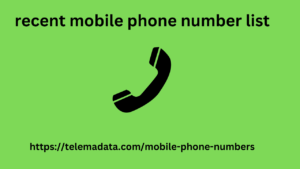In the context of increasing the potential contacts that are interesting for the company. It is assumed that they all have the same value: this is not the case.
A lead, therefore an inbound contact, is very different from an offline or outbound one. Inbound leads have already had ways to learn more about the company’s services. They have most likely already done a search on Google or on social pages. Visited the website and looked at the pages they were interested in. Maybe they have already read the blog, watched videos and, without a doubt, provided their contact information.
Obviously this situation differs from the one in which a contact receives an email or a cold call, since these people have not taken the initiative to learn about the company.
The conclusion? Inbound leads must be treated differently from outbound ones. Let’s see how.
Inbound Lead Management
Since most inbound leads already know the company in some way, it is best to avoid focusing the first interactions on the agency, the services it offers and the results achieved.
The first interviews and phone calls should be focused on the leads.
It is advisable to make sure that the first phone call or email is dedicated exclusively to the customer, with the aim of getting to know them, understanding their challenges and problems and identifying how you can help them.
Lead management: the role of qualification
Despite the initial good premises, collaboration may not be effective for some types of potential customers. This is why qualification plays a strategic role in lead management, since it may not be possible to help them. The goal of this first phone contact or meeting is to qualify the customer to determine whether they can enter the sales process or not. At the same time, it is important to do your best to help the potential buyer solve their problems and difficulties.
Positioning yourself as a useful resource from the beginning increases the lead’s trust
It is essential to make the contact feel safe, so that they learn to know, appreciate the company and, as a result, become loyal. The more advice and assistance you provide, the faster you will achieve this goal. If you try to sell a service right away, you risk alienating the customer.
Lead management
When it comes to qualification, it is helpful to use a scoring system, a framework or a series of specific questions. One workable methodology is Pain, Power and Fit:
Pain: Does the customer have a real problem? Can they articulate it? Is this a priority for them? Based on their answers, assign a score from zero to five.
Direct marketing through mobile numbers is very common nowadays. Because direct contact with the customer makes the customer recent mobile phone number list more interested in purchasing the product or service. So if you need mobile number data of any country then you can buy data from us once. We try to provide accurate data. Our skilled team collects these telemarketing data through various tests. The cost of our provider is very low.
Power
Are you talking to the person who makes purchasing decisions? Is this the person who will sign the agreement or contract? Is this the person who has control of the 2024 denmark telegram user library powder budget? Assign a score based on these answers on the same scale.
Fit: Is the opportunity a good fit for cm lists the products or services offered by the company? Is the client company the right size? Does it have the necessary budget? Is the customer’s challenge similar to those you’ve solved for other companies? Again, assign a suitable score.
Customers with lower scores are still valid opportunities
But they may require more work to achieve the right synergy, better understand their problem, or verify whether they are a real fit. In the context of increasing the potential contacts interesting for the company, it is assumed that everyone has the same value: this is not the case.
A lead, therefore an inbound contact, is very different from an offline or outbound one. Inbound leads have already had ways to learn more about the company’s services; most likely they have already done a Google search or social pages, visited the website and looked at the pages they were interested in. They may have already read the blog, watched videos and, without a doubt, provided their contact information.
Obviously, this situation is different from the one in which a contact receives an email or a cold call, since these people have not taken the time to learn about the company.
The conclusion? Inbound leads must be treated differently from outbound leads. Let’s see how.
Inbound contact management
Since most inbound leads already know the company in some way, it is best to avoid focusing the first interactions on the agency, the services it offers and the results achieved.
Prospect Analysis
Since most customers are B2B companies with long sales cycles, complex processes, and a high average budget value, it is difficult to go from one meeting directly to closing. Typically, a follow-up meeting is needed to dig deeper into the business situation, conduct a full issue analysis, and develop a guidance report.
Guiding Your Interlocutor
Now that the customer trusts you, it will be easier to present optimization recommendations. It is important to remember that it is not about selling or convincing, but about providing expert guidance to ensure that it is followed.

